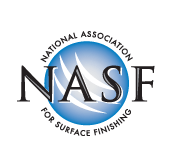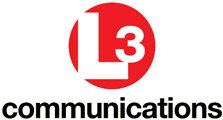Chemical Agent Resistant Coating
About CARC
Chemical Agent Resistant Coating (CARC) is a durable polyurethane paint system developed by the military for use on vehicles and equipment. First used in the 1980s, CARC paint is engineered to protect the vehicle from chemical, biological, and nuclear attacks, along with easy decontamination after the attack. Available in a variety of military colors and camouflage schemes, CARC is required on most of the military’s combat and support equipment, including ground vehicles, tactical equipment, and aircraft.
Benefits of CARC on Tactical Equipment
There are several benefits to CARC coatings on military vehicles, with the primary benefit being its resistance to chemical and biological attack. CARC paint is a topcoat added over primer and the vehicle’s substrate. The topcoat’s structure stops the chemical contaminants from absorbing into the substrate. Instead, the agent remains on the surface, allowing for an easy decontamination process.
CARC paint also provides vehicles with visual and IR camouflaging. The low-reflection pigment in the topcoat is matched to the specific theater of operation, so the camouflage pattern will help mask the vehicle on both the visual and IR spectrums.
Overall, the primer and topcoats in the CARC process provides increased durability to the equipment. CARC can withstand long-term exposure to the elements, and the system’s anticorrosive properties limit the visible wear – including resistance to scuffs and scratches – to the exterior of the vehicle, extending its service life.
Get a Quote for CARC Painting
- Same day or next day quote
- Convenient pick up and delivery
- Pretreatment & painting
- Expedited service available
The CARC Process
Apply the CARC system is a multi-step process, which includes cleaning and pretreating the substrate, priming, and a topcoat. K&L Plating can handle the entire process – including plating and preparing the substrate – while working within your deadline and budget.
The stages involved in applying a Chemical Agent Resistant Coating to a substrate include:
- Pretreatment cleans and prepares the surface for the primer and topcoat. Depending on the substrate, this can include a zinc phosphate chemical conversion coating or passivation.
- Priming adds protective coats to the substrate. Based on the specs and your application, the epoxy primer can be water- or solvent-based.
- Applying a topcoat is the final step in the CARC process. This is when the specific pigments are added to generate a colorful, protective finish to the product. The topcoat can be either a solvent-based polyurethane or a water-dispersible CARC polyurethane.

Full-Service Coating and Plating
At K&L Plating, we can handle all your plating and coating needs. We have the in-house capabilities for any metal plating, coating, and pretreatment to meet your project’s demands. We also offer complete finishing services, including CARC primer and topcoat applications. We work with a qualified supplier to apply the finish to meet the appropriate military specs and your requests.
By partnering with K&L Plating, you can simplify and speed up the finishing process for your project. We offer same-day quotes, expedited service, and convenient pick up and delivery. All our processes conform to military & industrial specs, go through rigorous internal QA, and are flexible enough to meet your project’s exact specifications. Depend on K&L Plating for all your plating, pretreatment, and CARC paint needs.
Benefits
- Resistance to chemical agents
- Easy decontamination
- Improved camouflaging
- Increased durability
Primer Specifications
- MIL-DTL-53030D (Water-based epoxy primer)
- MIL-DTL-53022E (Solvent-based epoxy primer)
Topcoat Specifications
- MIL-DTL-53072E (CARC process)
- MIL-DTL-64159B (Aliphatic polyurethane, single component)
- MIL-DTL-64159B (Water-dispersible polyurethane coating [WD CARC])
Government Specifications
- TT-C-490 (Cleaning and pretreatment)
- FED-STD-595 (Topcoat colors)



Plating Processes
We’re a full-service plating company and our work conforms to ISO standards. Plating services include:
- Passivate
- Blasting
- Phosphating
- Electroless nickel
- Zinc plating
- Baking
- Chemical films
- Solid Film Lubrication








